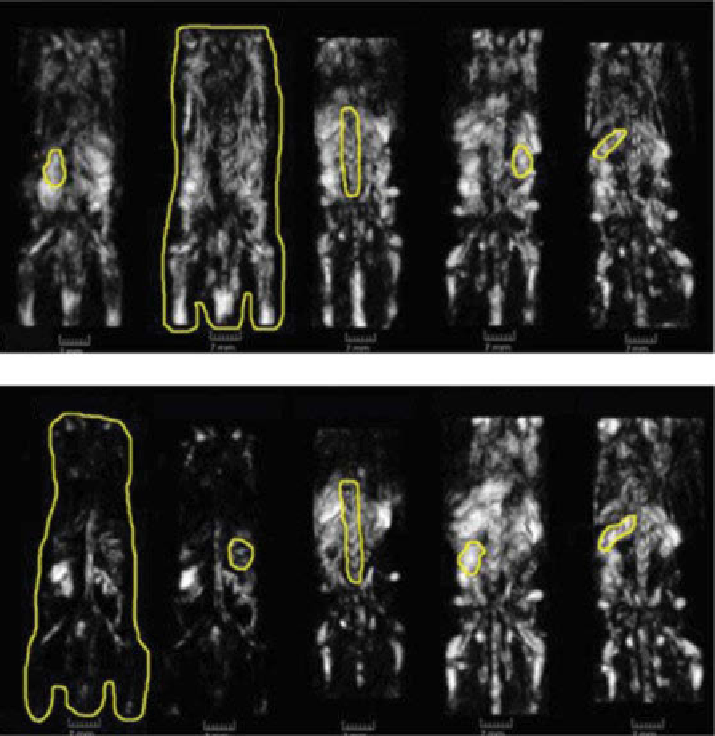Biomedical Engineering Reference
In-Depth Information
PreGNR
PostGNR 1 h
PostGNR 1day
PostGNR 2 days PostGNR 8 days
4
3
1
2
5
765
PreGNR
PostGNR 1 h
PostGNR 1 day
PostGNR 2 days
PostGNR 8 days
4
5
3
2
1
1064
figure 5.13
Three-dimensional OAT dorsoventral reconstruction from a mouse before
and after intravenous injection of gold nanorod-Peg solution for 765 and 1064 nm laser illu-
mination. The locations of the image areas used for analysis of organ-specific changes on each
view are outlined: (1) left kidney, (2) right kidney, (3) spleen, (4) spine, and (5) whole body.
(Adapted with permission from Ref. [15]. © sPIe-International society for Optical engineers.)
formation of metal nanostructures with hollow interiors can be attained from
various types of metals [143]. The major steps in manufacturing hollow nanoparti-
cles are shown in figure 5.14 with Tem images of silver nanoparticles and
corresponding hollow gold nanostructures obtained by aqueous HAucl
4
solution.
gold nanocages feature single-crystal structure, hollow interiors, ultrathin and
porous walls, and high molar absorptivity [145]. Due to their strong optical absorption,
nanocages can be melted even by a camera flash discharge [146].
Hollow gold nanocages have been explored in a number of biomedical applica-
tions, often in cancer detection and treatment [147]. gold nanocages are particularly
applicable for
in vivo
OA imaging because of the compact size, bioinertness, and

Search WWH ::

Custom Search